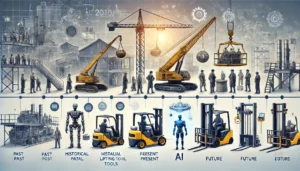In heavy-duty industries, clients are paying more attention to precision together with strong and efficient tools. Tasks in the manufacturing, construction, and metalworking industries require tools that can stand exponential cutting without losing their productivity. Here are examples of the most suitable and durable cutting tools for such applications:
1. Carbide-Tipped Cutting Tools
Tools with carbide tips are preferred due to their wear resistance and extreme toughness. At high temperatures associated with cutting processes, carbide materials (usually tungsten carbide) help these tools to hold a sharp edge. As a result, it is widely applicable for machines with high concentration of carbon steel and stainless steel that require accurate cuts and carbide tools.
2. High-Speed Steel (HSS) Tools
HSS tools are very popular because they are multi-purpose and are tough. They easily cut through many materials and because of the strong steel and tungsten material, they tolerate top temperatures. HSS tools are mostly used in drilling, milling and turning machines where a balance between cost and performance has to be achieved.
3. Shears and Scissors for Industrial Use
Industrial scissors and shears are very useful tools for the cutting needs of heavy duty materials used in solid fabrics, leather, and metal sheets. These tools are built with specialized blades that are serrated and give additional muscle so that tough cutting jobs can be performed. They are usually made from high carbon steel or stainless steel which equip the blades with the strength and durability to mitigate tough cutting tasks.
4. Machines with Bandsaws
In industrial fields, bandsaw machines are used as the most needed tools while dealing with the dealing and cutting of metals and wood. They are integrated with continuous loop blades that are precise and provide smooth cuts of different shapes and can endure large workpieces. The bandsaw blades are also tough and are further enhanced with diamond or carbide coatings to ensure they last longer and provide consistent performance even during heavy use.
5. Cutters for Bolts
Heavy-duty tools which are made for cutting very thick materials such as bolts, chains, and padlocks are called bolt cutters. These tools are featured with long handles that provide the needed leverage and jaw muscles to tackle tough materials. The cutting blades are made from hardened steel so that they become more durable and do not lose shape during long periods of use.
6. Lathe Turning Tools
Lathe cutting tools are very important because they allow for precise shaping and cutting of materials in the metalworking industry. For tools that enable heavy duty working on lathes, high speed steel and carbide lathe tools are the most used materials. The strength and durability of these tools allows them to cut hard metals, and to perform consistently without having tool changes so often. This reduces maintenance activities and increases productivity.
7. Porting Tools
Porting tools are cutting instruments that are used in finishing and enlarging the internal surfaces of engine components and other such internal features. These are heavy-duty tools made from heat-treated alloy steel that have brazed carbide inserts. Their design allows for precise material removal, ensuring optimal performance of the components being machined.
Material Considerations for Durability
Lathe tools have differing levels of durability based on the material they are built with. Tungsten carbide, for example, is very hard and can keep a sharpened edge even at high temperatures. This makes it very good for cutting hard materials. High speed steel is good enough in hardness but tough to resist softening the temperature. It can also be used for multi purpose cutting tools. Other tool steels containing high amounts of carbon and chromium are also good options because they provide wear resistance and durability to tools that suffer from repetitive stress.
Conclusion
Thinking about the strongest cutting tools for industries which operate on higher workloads requires a thorough assessment of the particulars of the application, material for cutting, level of precision involved, and the environment where it will be used. Tungsten carbide and high-speed steel tools have the strength and efficiency required to put up with heavy industrial work. Purchasing such robust tools not only improves productivity but also aids in safety and economy by decreasing the number of times tools are replaced and the cost of maintenance.










